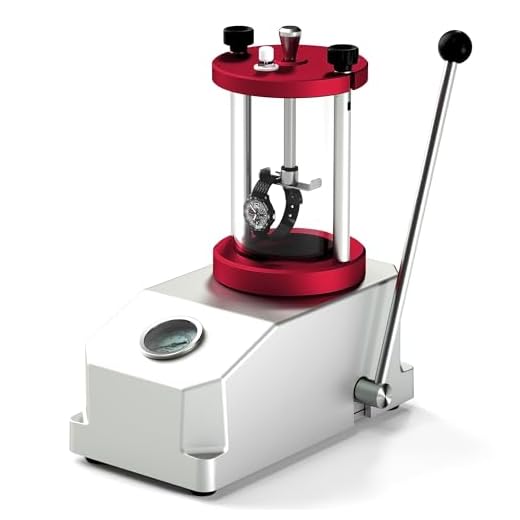Fix Your Hybrid Watch: Fast, Precise, and Safe
This guide shows step-by-step photos, exact tools, and torque specs to safely disassemble, diagnose, replace parts, and test Withings and Fossil hybrid watches for reliable, waterproof performance and restore function.
What You'll Need
Preparation & Safety: Know Before You Open It
Skip this and you'll regret it—avoid bricking or damaging delicate modules with a few prep moves.Power down the watch and unpair from your phone (or pair briefly to note behavior), then remove any straps that block the caseback. Photograph the watch’s front, back, sides, lugs, and crown at high resolution from multiple angles—these photos become your reference for reassembly.
Document the model and serial numbers (caseback and inside the lug area) and note the battery type if visible. Write these details on a label or in a repair log.
Set up a bright, organized workspace on an anti‑static mat with directional lighting. Wear an ESD wrist strap grounded to the mat and work on a clean surface free of loose fibers. Use a low‑magnetic or non‑magnetic labeled parts tray or a sticky watchmaker mat to store screws and small parts—label each compartment as you remove components.
Follow battery safety: handle coin cells with plastic tools, avoid shorting terminals, and discard swollen cells in approved containers. Keep liquids and solvents away from the work area.
Note common Withings/Fossil specifics:
Consult the official service manual or manufacturer support when caseback type, gasket replacement, or torque specs are unclear. Set up your anti‑static mat, ESD strap, labeled trays, and take reference photos before opening the case.
Disassembly: Photos, Order, and Hidden Screws
Want to reassemble like a pro? Photograph every step and label parts like a detective solving a tiny mystery.Remove the straps and extract spring bars with a spring‑bar tool. Photograph the lugs and strap orientation.
Open the caseback: unscrew with a Jaxa/case wrench for screwbacks or pry with a case knife for snapbacks. Photograph the back and gasket seating.
Remove bezel or crystal clips: unclip gently with plastic picks. Photograph clip positions and any shims.
Extract the crown/stem: depress the release pin (use a magnifier) and pull the stem straight out. Photograph stem depth and crown orientation.
Lift the movement: use plastic tweezers or a movement holder and lift straight up, noting dial/hand 12 o’clock orientation. Photograph each layer (movement front, back, sensors).
Group screws by size/location: place each screw set in labeled compartments or on tape labeled “caseback — #1”. Photograph screw layouts.
Watch for tricky spots:
Troubleshoot stuck parts: apply minimal heat, use thin plastic cards to pry, avoid metal edges. Prevent scratches and gasket deformation by using plastic tools and gentle, even pressure.
Diagnose & Replace: Battery, Coil, or Connector?
Is it the battery or a sneaky flex cable? Let’s find the real culprit before you buy parts you don’t need.Measure battery voltage with a multimeter. Read a typical coin cell as ~3.0 V (CR2032/CR2025 nominal); replace if below ~2.6–2.8 V. Read a rechargeable module as ~3.7 V nominal; charge to 4.1–4.2 V only with proper charger.
Inspect flex cables, connectors, solder joints and coils under magnification. Test with continuity and voltage checks and use simple on‑bench hookups to test motors and contacts (example: connect a fresh coin cell or regulated bench supply to the motor pads briefly to verify stepping).
Remove and replace batteries/modules safely. Use plastic tweezers or a non‑metal spudger, note polarity, avoid shorting clips, and keep metal tools away from terminals. For rechargeable packs, discharge slightly and handle per Li‑ion safety rules.
Clean corroded contacts with 90–99% isopropyl alcohol and gentle abrasion (fibreglass pen or pencil eraser). Source OEM parts by checking the caseback/PCB markings, service manuals, or the manufacturer’s parts list; contact Withings/Fossil support if unsure.
Stop and consult a specialist when PCB traces are lifted, coils are burnt, micro‑soldering is required, or corrosion extends under components.
Reassembly & Torque Specs: Exactly How Tight
Tighten like a surgeon—too loose invites water, too tight strips threads. Use the right torque and drivers.Seat the movement: lower it squarely into the case and engage the movement feet; press gently until flush.
Align the dial and hands: set hands to 12:00, fit the dial feet, then press hands straight on with a plastic hand‑press to avoid bending.
Insert the crown/stem: slide straight in, set to the correct position, then secure the stem‑set screw.
Use the right tools:
Apply these torque targets (typical):
Tighten in sequence: follow a star pattern for multiple screws and torque in three passes (30%, 60%, 100% of target) to seat gaskets evenly.
Replace and grease gaskets: measure cross‑section with calipers, fit a continuous OEM O‑ring when possible, apply a thin film of silicone grease with a brush, and only cut a replacement O‑ring at 45° and bond with silicone cement if no continuous ring is available.
Testing, Calibration & Waterproofing Checks
Pass every test or it’s back to the bench—here’s the professional checklist to confirm a reliable repair.Press each control and twist the crown through all positions. Verify buttons, crown detents, and hand travel move smoothly and return to rest. Example: press a button 10×; confirm no sticking or skipped clicks.
Pair the watch: open the companion app and perform a Bluetooth pairing and firmware sync. Confirm sensors report realistic values (steps, accelerometer, ambient light). Example: walk 50 steps and confirm the step count increments.
Measure charging: connect the charger and verify charging current and voltage (expect stable voltage near nominal battery spec; see service manual). Watch for abnormal heating.
Calibrate hands and sensors: use the app or button sequences to run hand alignment and reset step/heart‑rate baselines. Example: enter hand‑cal mode (app or two‑button press) and set all hands to 12:00.
Inspect gaskets visually. For water resistance, prefer a professional pressure or vacuum tester (dive shop or watchmaker). If forced to test at home, perform a cautious wet test: fully submerge briefly and watch for fogging, then dry and inspect.
Run a 24‑hour burn‑in: cycle buttons, connect/disconnect Bluetooth, and monitor battery drain. Declare success if mechanicals, electronics, charging, and water tests pass with no condensation; otherwise, disassemble and recheck seals, contacts, or alignment.
Ready to Repair with Confidence
Follow the stepwise method: prepare safely, document disassembly, diagnose carefully, respect torque specs, and verify sealing; methodically photograph each step, and consult pros for complex board work or pressure testing—ready?







Short version: awesome. Long version: I nearly drowned my watch in the ‘waterproofing checks’ section because I misread the pressure method 😅
Okay, here’s my saga:
1) Followed the article’s soap-bubble test (safe) — passed.
2) Thought ‘pressure chamber’ meant dunk it in the pool for a sec (nope).
3) Watch still works but my dignity is wet.
Maybe add a bold WARNING about not using actual pool pressure, unless you’re into that kinda chaos.
LOL @ step 2. Been there. The vacuum tester (hand-held) is the safest and cheapest route — no need for insane pressure.
Also, watch straps + bracelets can trap water next to the case. Remove before testing!
Pool-test = nope. If you’re short on kit, the article’s soap+air trick is surprisingly reliable if you watch closely for tiny bubble trails.
Oh no, sorry to hear that, Alex — glad the watch survived! Good call: we’ll add a clearer warning and a schematic of safe pressure-test alternatives (e.g., inexpensive vacuum/suction bulb tests) so people don’t improvise with a pool.
Newbie question: the guide talks about replacing the coil vs the connector vs the battery. How do you tell if it’s the coil specifically? My Fossil is losing sync randomly but battery voltage looks OK.
Tried a soft reset, still flaky. I don’t want to buy parts unnecessarily. Any quick tests before opening it up?
If you’re comfortable opening it, take photos at each step and test with the back off — sometimes the casing puts pressure on a flex and creates intermittent faults.
Also, check for corrosion around the coil area — even a tiny trace can eat signal strength. A bit of isopropyl on a swab can reveal hidden issues.
One more thing: check the app logs (if available) for patterns — same time of day, after certain movements, etc. That can hint toward antenna/coil issues vs software.
Good question. Quick checklist:
1) Check battery under load (multimeter while device attempts a sync) — if voltage drops, battery likely culprit.
2) If battery is steady, inspect the coil connection flex for visible damage; use continuity check across connector pads.
3) If the coil is suspected, try wiggling the connector gently while monitoring connectivity — intermittent contact points often indicate flex/connector issues.
4) If you have a spare donor board, swapping the coil is definitive but I understand that’s not ideal. Start with continuity and voltage under load.
If you want, describe your multimeter readings and I can help interpret them.
If you’re seeing intermittent Bluetooth, that points to connector/coil. Firmware sync issues are less likely to cause random hardware dropouts unless there’s an OTA in progress.
Good write-up overall. One nitpick: the Disassembly section could use a couple more *close-up* pictures of the hidden screws on the Fossil model. That little screw behind the lug had me stumped for 10 minutes.
Also, the ‘Preparation & Safety’ checklist saved me — extra battery holder was a lifesaver.
If you have one, a jeweler’s loupe with an LED really helps find those screws. Cheap and worth it.
Thanks for the note, Tom. We’ll add macro shots of those lug screws in the next revision — and include a callout for the common hiding spots per model. Appreciate the heads-up!
Nice safety section — the ESD precautions saved me once. A tiny grounding strap is such a humble hero.
Wish the guide had a quick list of recommended screw sizes per model though. Maybe future update?
Screw sizes are gold. Keep a labeled tray when disassembling or you’ll be playing match-the-screw later. 😅
Also mark fragile parts with washi tape or small sticky notes. I can’t be the only one who forgets which tiny screw came from where…
Thanks, Hannah — good call on screw sizes. We’ll compile a model-specific screw chart (length/thread) for the next revision.
Fantastic guide — super thorough. I especially liked the torque specs table; finally something that tells me EXACTLY how tight to go (no more finger-tight disasters 😂).
A couple of notes from my last repair: the tiny flex connector on my Withings popped a bit when I lifted the coil, so the pictured order of removal saved me. Also, the waterproofing check section helped — I did the soap-bubble test after resealing and it passed.
Would love a quick addendum about which sealant brands people prefer. Some of the aftermarket ones smell… intense.
Totally agree on the connector — I zapped one once (RIP). If you lift the coil, use a pick to cradle the connector so it doesn’t bend. Learned that the hard way.
For sealant I like Loctite 518 for metal-to-metal and NovaBond for small watch cases. Low fumes if you let it cure in a ventilated spot. 👍
Thanks Samantha — glad the torque table helped! For sealants we linked a few tested options in the comments section (silicone-free RTVs are usually best). We’ll add a short list of recommended brands in the next update.
Great technical depth here. Love that you included exact torque values for the case screws AND the hand-setting gears — most guides skip that and then you end up with stripped threads.
Suggestion: consider adding a small note about torque wrench calibration and the minimum measurable torque for the micro-wrenches recommended. Some of those cheap drivers aren’t accurate under 0.05 N·m.
Excellent point, Priya. We’ll add a short section on torque wrench calibration and suggested minimum resolution for micro-torque drivers. Thanks!
Agreed. I bought a cheap micro-torque driver and it was off by 20%. Spent more replacing stripped screws than the tool cost 😭